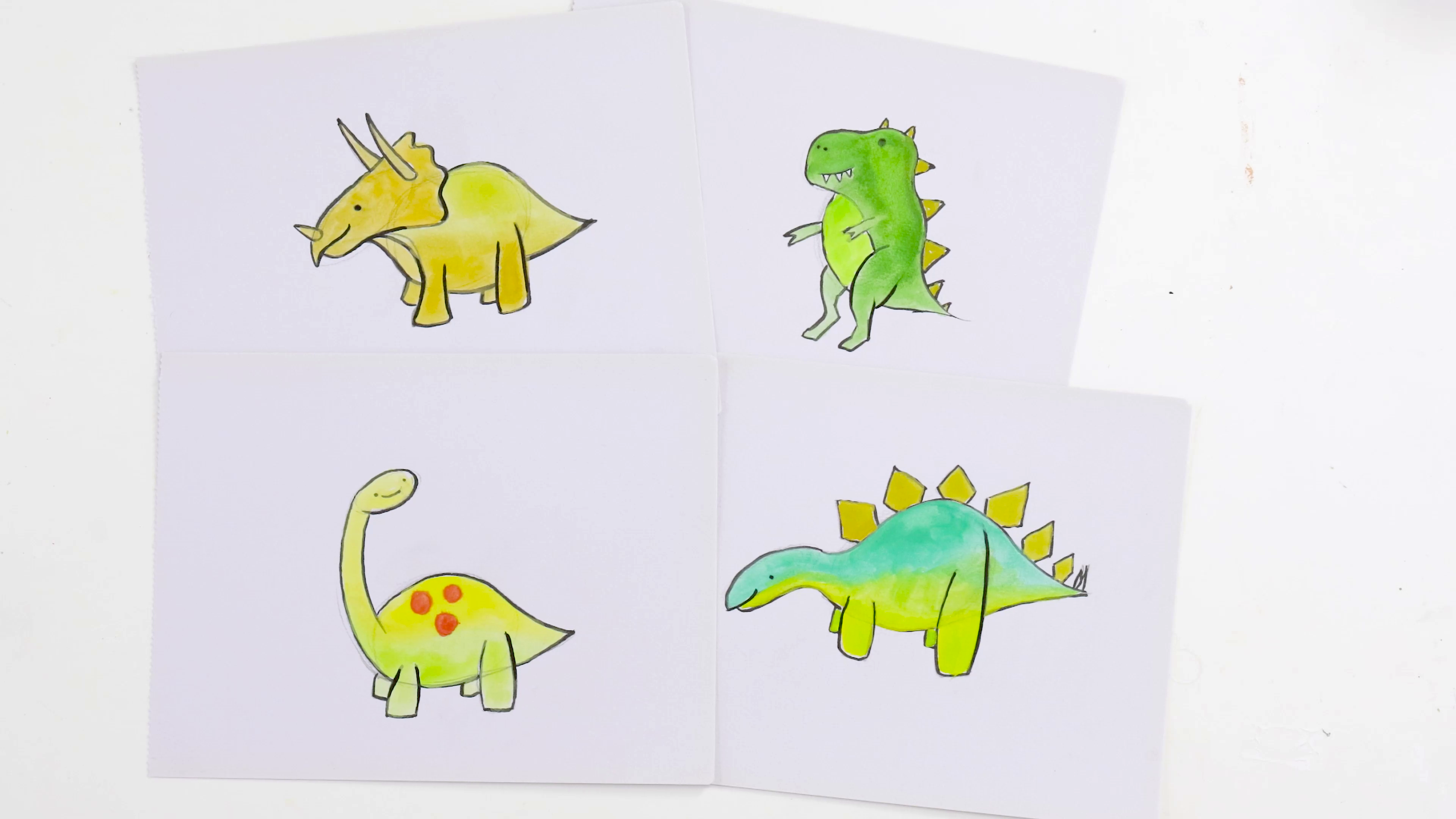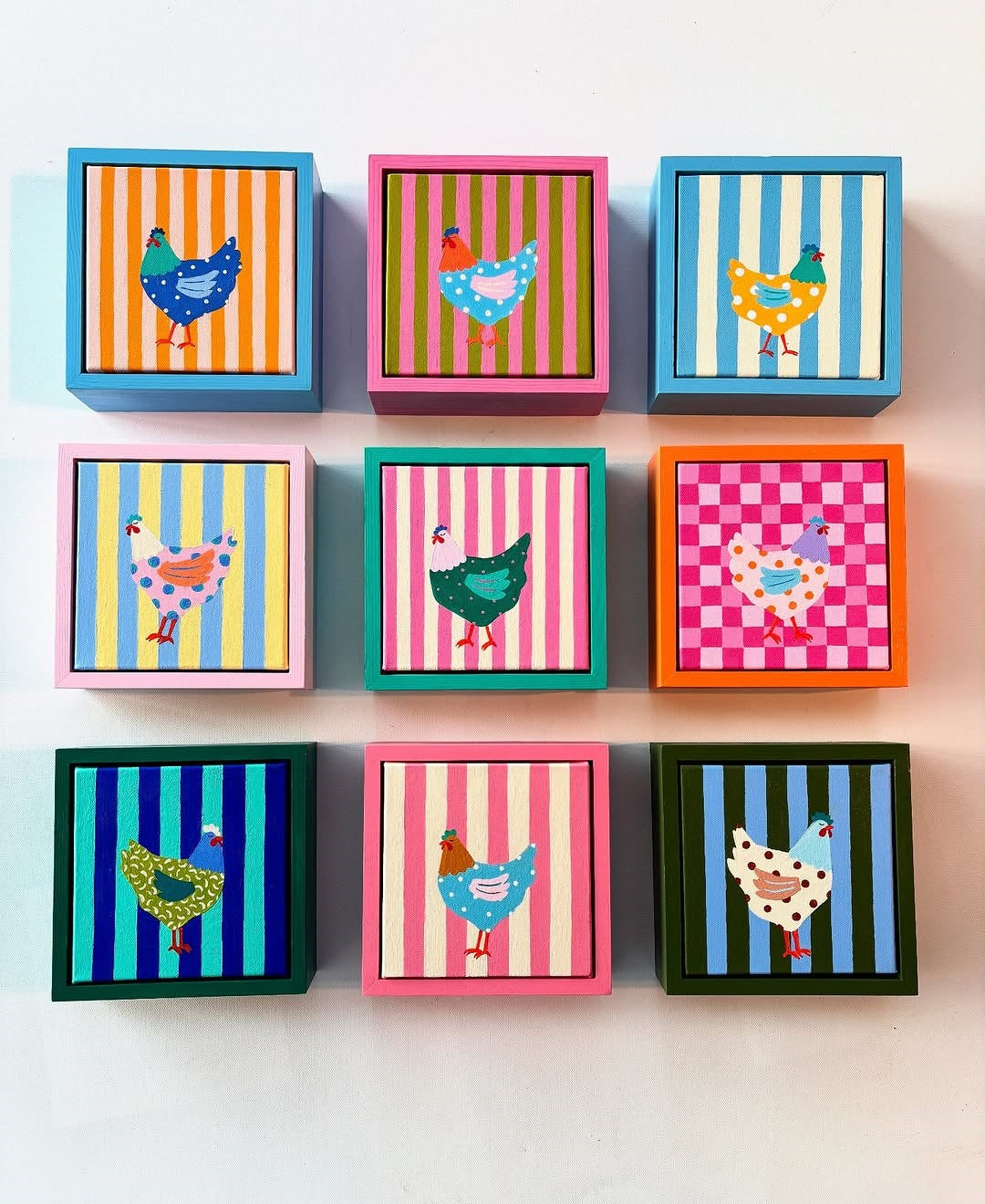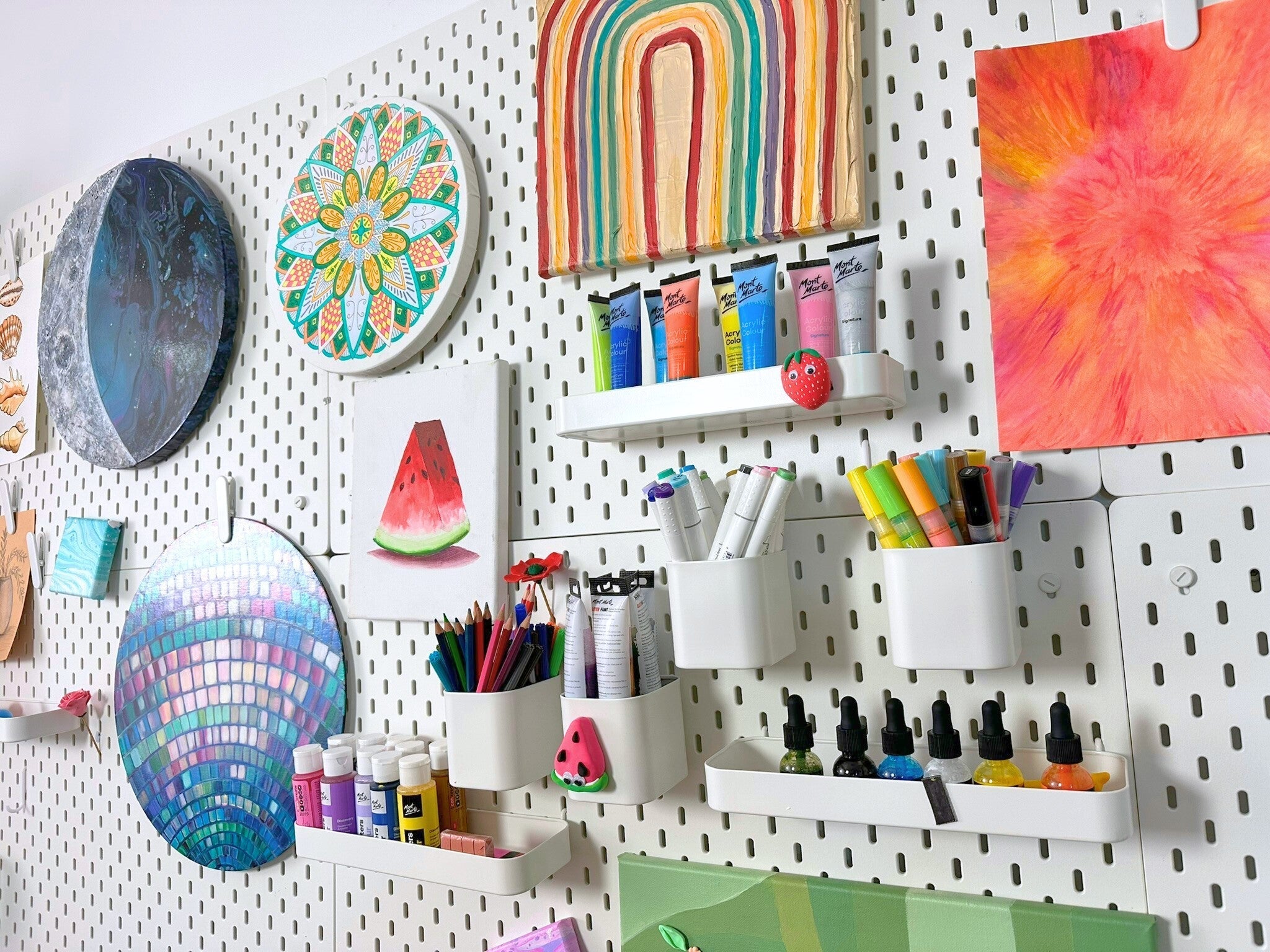First time trying polymer clay? It doesn’t have to be scary or intimidating and once you get the hang of things, polymer clay is fun and pretty versatile to work with. To make things easier, we’ve rounded up 20 polymer clay tips and tricks for beginners to get the ball rolling.
1. Prepare your work surface
Polymer clay can be sticky to work with, so to keep your tables clean, reach for a plastic palette such as our signature acrylic palette or our easy clean palette, it’s made from a hardwood with a laminated surface on top. Otherwise, glass and ceramic tiles can be used too, but be careful of any texture on your work surface such as cutting boards, as this texture will find its way onto the clay too.
2. Condition the clay first
When you first unwrap your polymer clay from its packaging, you’ll notice it can be hard to work with. This is because it needs to be conditioned first. To condition the clay, cut the clay into a small slab and knead it with your hands a little. The clay will soften slightly thanks to the oil and warmth of your hands, so you can roll the clay into a ball or knead it further to make the clay more malleable. You can then begin by rolling it out with a rolling pin, in between two sheets of cling film. The cling film will keep the clay clean and the rolling pin will help smooth the clay out. Alternatively, if the clay is still difficult to work with, you can use a clay press like our signature polymer clay press, it’ll work the hard yards for you and make things easier.
3. Don’t mix polymer clay with air dry clay
If you’re thinking of adding a bit of air dry clay in with your polymer clay, think again. Polymer clay isn’t as effective when it’s mixed with air dry clay, play dough or plasticine because of the way those are made. Plasticine and play dough don’t completely set and air dry clay doesn’t need heat to set, so mixing the clays isn’t a good idea.
4. Packing projects will reduce thickness
If you’re creating a sculpture, a pot, a cup or a plant holder, you probably won’t want to be using solid slabs of polymer clay. Not only will that not be helpful for your project, it’ll also make your project too thick and harder to bake, not to mention using up a lot more clay.
To pack your project, use aluminum foil to shape your sculpture, and build the clay over the top of the foil. Foil works well because it’s heat resistant, so it won’t cause any problems with your oven or your sculpture. You can also use metal in your clay to make pieces more stable, this is called an armature.
5. Keep polymer clay away from water
Polymer clay can’t be thinned with water, it can however be thinned by conditioning the clay and using a rolling pin. This is because, polymer clay is made from waterproof oil, that will cause the clay to go brittle and become less malleable if it comes into contact with water (this includes pre-painting with acrylic paints), so it’s best to keep it away from water.
6. When making jewellery, add a hole to your beads or earrings before baking
It’ll be a lot easier to pop a hole into your clay, using the end of a pencil or a paint brush before your polymer clay creation goes into the oven for baking. Whether you’re making beads, earrings or a pendant from polymer clay, pop the hole in, let the clay bake and cure, then once it’s cool, you can thread a string or metal through the clay.
7. It’s possible to add glitter in the clay before baking
If you’re wanting to add glitter to the clay, it’s possible to mix it into polymer clay before it’s baked in the oven. This will spread the glitter throughout the clay rather than having to paint or glue it onto your clay sculpture after it’s been baked. You can knead the clay into the glitter or dip particular pieces of clay into the glitter (just steer away from using any glue products at this point) as the clay will absorb the glitter, before baking.
8. Rubbing alcohol can help remove fingerprints from clay
Sometimes when kneading and pressing into the clay, you can accidentally leave fingerprints. Rest assured, there is an easy fix, isopropyl rubbing alcohol can help remove any fingerprints from your clay works, just use this on a cotton tip or paper towel to remove any prints, before baking the clay. 
9. Remember the polymer clay baking time
Once your project is finished, it will need to be baked to cure the clay. When it comes to polymer clay baking time, the rule of thumb is for every 6mm of clay thickness, bake it for 30 minutes at 120-130 degrees Celsius (248-266 degrees Fahrenheit). The polymer clay baking time is one of the most important polymer clay tips and tricks for beginners, because it can make or break most projects.
10. Resist the temptation from opening the oven door to check
As tempting as it might be to check on your project half way by opening the door, this can disrupt the curing process. Certainly, check on your project, by taking a peek through the oven door, but resist the temptation from opening the oven door mid-way to check, unless you suspect there may be a hazard. Remember to take care when removing clay from the oven and never leave your polymer clay unattended in the oven.
11. Don’t skip the oven and don’t try a microwave
Polymer clay needs dry heat from the oven for it to set, so don’t use a microwave because this can cause your clay to melt, burn and smoke as well as damage your microwave. Make sure you use an oven (or an air fryer if you don’t have an oven) and bake your clay as directed.
12. After baking, leave the oven door open
Once the oven timer dings, turn the oven off and leave the oven door open or slightly ajar, this will help minimise any potential cracking in your clay, as the clay will go from a hot environment to cooling down to room temperature. Baking polymer clay in the oven is a little like cooking a meringue, you don’t want to take the clay out as soon as the oven has finished, or your sculpture could crack easier.
13. When baking, keep your sculpture away from the heat element
It’s best to bake your sculpture on a baking tray, placed on the middle or lower rack to keep it away from the top heating element. This will stop your clay from heating up too quickly and cracking.
14. Polymer clay can still be flexible after cooling
When working with polymer clay, you will expect some flexibility even after baking it. Polymer clay isn’t like pottery, so you won’t get rock hard results once it’s cured, and you can expect some flexibility after your sculpture has cooled.
15. Polymer clay can be baked multiple times
More damage will be caused from under baking your project than over baking it. This is because polymer clay can be baked multiple times, in fact the Mont Marte Make n Bake Polymer Clays can be baked up to six times. If you’re working with a thick sculpture or layers, you can bake the first layer before letting it cool and baking it again. Check out our polymer clay FAQs for more on this.
16. Polymer clay can be sanded, drilled and painted once cured
Once the clay has cooled down, it will have cured. Once it reaches this point, it can be sanded with a fine grit sandpaper to remove any texture and make your sculpture smooth or it can be drilled. If you’re wanting to grab the paint brushes out, you can also paint polymer clay with acrylic or oil paint once it’s cured.
17. After curing, polymer clay can be glued
If you’re creating a sculpture that requires some gluing or if you’re wanting to join small parts together without using clay, a cyanoacrylate adhesive or epoxy adhesive will keep your clay bits and pieces secure.
18. Plaster of Paris can fix cracks in polymer clay
Mix in some Plaster of Paris and paint together to create a paste that matches the same colour you’re looking to cover. Then gently apply this to the sculpture to cover the crack. To see this step-in action, check out this handy how to video.
19. You can use an air fryer if you’re stuck
If you don’t have an oven, you can use an air fryer to bake polymer clay. Air fryers are different, so you’ll have to be careful and create a test sculpture before committing to your finished project. Try heating your clay creation in the air fryer for 15 minutes at 130 degrees Celsius (266 degrees Fahrenheit), for half the time. Never leave your polymer clay unattended in the air fryer.
20. Store left over clay properly
To make the most out of your clay, you can store left-overs to re-use for more creative sessions or keep the excess for later on. You can store any left-over polymer clay in an opaque, (to make sure no light gets in) air tight container and then store that in a cool, dark area.
Looking for more? Check out our polymer clay FAQs. Or, put your skills to work and try these fun DIY terrazzo homeware projects using polymer clay or explore our range of polymer clay tools and clay.

































